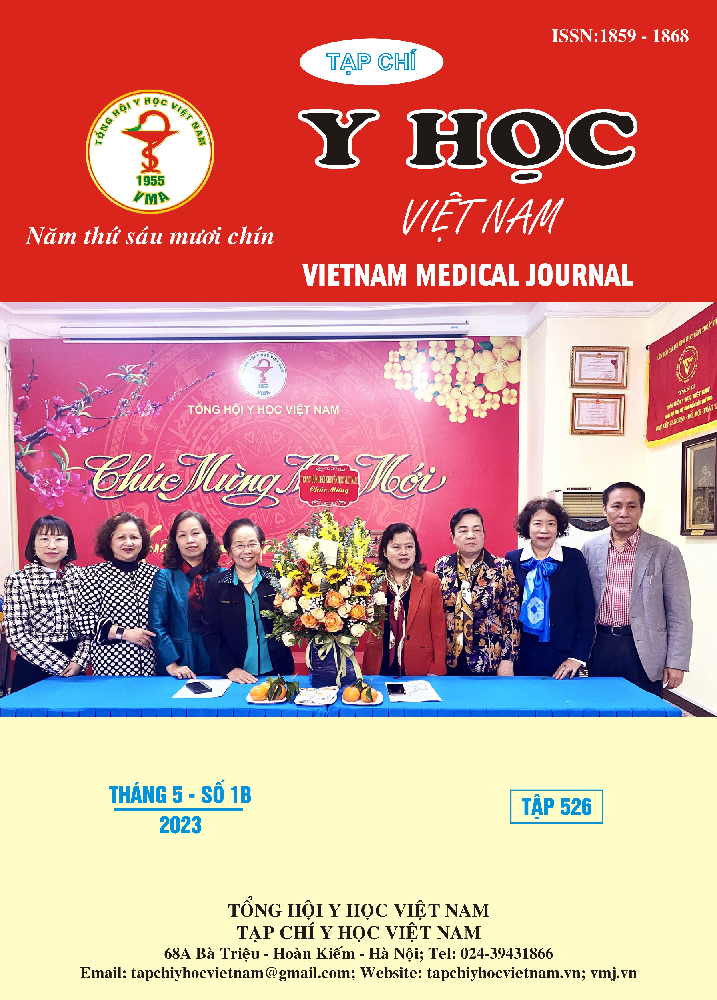RESEARCH CHARACTERISTICS OF EARLY STAGE BREAST CANCER TREATMENT AT 175 MILITARY HOPISTAL
Main Article Content
Abstract
Objective: To determine the characteristics of breast cancer patients undergoing endocrine treatment at the Oncology Center of Military Hospital 175. Methods: Design a descriptive study of a series of survey of 105 patients with early breast cancer receiving endocrine therapy at Military Hospital 175 from December 1, 2021 to May 30, 2022. Results: The mean age was 54.8 ± 10.4 years old. Histopathological classification according to Grad group II accounts for 80% and group I 17.1%. Group III only 2.9%. HER-2 positive accounts for 13.3%. The most common stage of breast cancer is IIA, accounting for 61.9%. In which, the period from IIB (8.6%) and IIIA (2.9%). The pathological results in mainly OTV Carcinoma accounted for 82.9% and Carcinoma of the mammary gland accounted for 10.4%. Patients received chemotherapy before endocrine therapy 77.1%. Patients with radiation therapy accounted for 70.5%. Hormonal drugs used in which Tamoxifen (50.5%) and Ais (49.5%) Use of medical ovarian suppression 25.7%. The average duration of hormonal drug use was 32.5 ± 22.5 months. Conclusion: Adjuvant endocrine therapy significantly reduces the risk of breast cancer recurrence, increases the possibility of cure, however, unwanted side effects on bone health must be considered.
Article Details
Keywords
breast cancer, cancer stage, endocrine treatment
References
2. Muhammad, A., et al., Postmenopausal osteoporosis and breast cancer: The biochemical links and beneficial effects of functional foods. Biomed Pharmacother, 2018. 107: p. 571-582.
3. Welch, H.G., et al., Breast-Cancer Tumor Size, Overdiagnosis, and Mammography Screening Effectiveness. N Engl J Med, 2016. 375(15): p. 1438-1447.
4. Nguyễn Thị Mai Lan, Nghiên cứu tỉ lệ mắc mới ung thư vú ở phụ nữ Hà Nội giai đoạn 2014 - 2016. 2020, Trường đại học Y Hà Nội: Hà Nội.
5. Bailey, S. and J. Lin, The association of osteoporosis knowledge and beliefs with preventive behaviors in postmenopausal breast cancer survivors. BMC Womens Health, 2021. 21(1): p. 297.
6. Đặng Công Thuận, Nghiên cứu các đặc điểm chẩn đoán hình ảnh, giải phẫu bệnh và tình trạng thụ thể nội tiết bệnh ung thư vú tại Bệnh viện Trường Đại học Y Dược Huế. Tạp chí Phụ sản, 2012. 10(3): p. 250-257.
7. Tống Thị Mỹ Phụng, et al., Nghiên cứu đặc điểm các trường hợp u vú được phẫu thuật tại bệnh viện Từ Dũ. Tạp chí Y học Việt Nam, 2021. 503(1).
8. Embaye KS, et al., Distribution of breast lesions diagnosed by cytology examination in symptomatic patients at Eritrean National Health Laboratory, Asmara, Eritrea: a retrospective study. BMC Womens Health, 2020. 20(1): p. 250.


